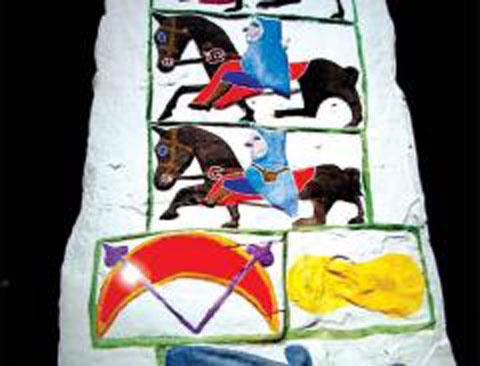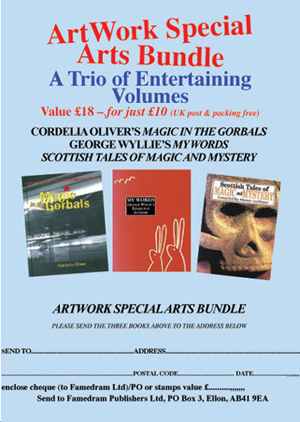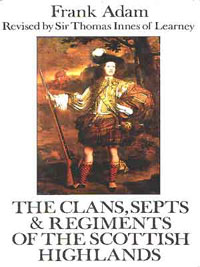An Italian artist in Royston
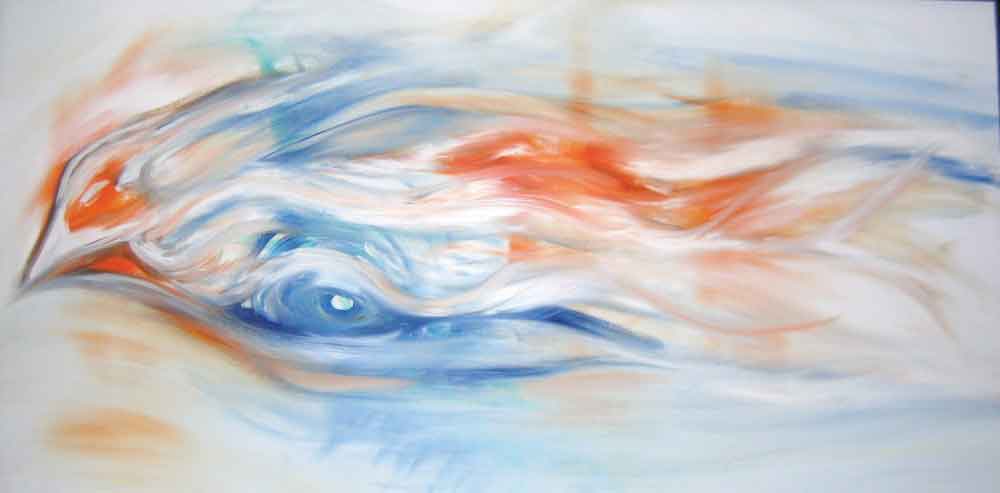
LOOKING OUT of the window, you see Celtic football stadium, otherwise known as 'Paradise', and hear the growl of traffic on the M8. To the right but not in view is Glasgow cathedral and the Necropolis. Closer is Glasgow Royal Infirmary. This is Royston, otherwise the Garngad, 'Garden of God', originally populated by Irish Catholics and not long ago, one of Glasgow's worst slums.
Today few traces of old Royston remain but the church steeple still stands and its hall is a community centre. Social housing (new-builds three storeys high) dominate, but a number of tower blocks interrupt the sky-line. A couple were recently demolished, which is timely when considering the fate of Grenfell Tower in West London.
Here, in a one bedroom flat, lives artist Margherita Muller, with her Rutherglen-born husband, William. Born in the mid 60s in Italy to an Italian mother and French father, she was brought up in Anzio by the sea on Italy's west coast, 32 miles south of Rome. In summer, Margherita stayed with her French grandmother at Mougins in France. Her father was a perfumier in nearby Grasse and her great grandfather, Jacob, was a Swiss lithographer living in Cannes where he printed commercial posters.
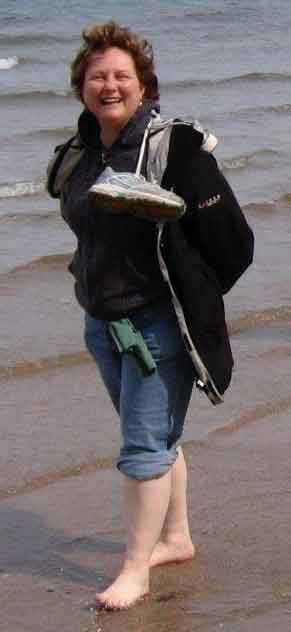
Margherita never saw them but is told she has the same 'hand' as him. As a child Margherita liked to draw waves, hair and undulating forms. The sea held a fascination for her; so did the paintings of the Japanese artist, Hokusai. She had dreams of the sea but they were not always benign. Waking in terror she remembered scenes of standing on the promenade, watching waves engulf people, vehicles and dwellings.
With an analyst's assistance, she domesticated the waves, discovering they represented uncontrollable emotions and her art helped. In fact, Margherita's strong feelings, like anger and fear, stimulated her into painting.
In 2000 Margherita moved to Glasgow. Eight years later, she rented a studio across the road in the old tobacco factory, recently developed into artists' studios by WASP. These studios (WASP's Artist Studios, Dennistoun) have an alias: 'The Wasp Factory', referring to the building's original purpose and to Iain Bank's famous 1984 novel.
As Scotland's first purpose-built studios, the building offers space for over 200 artists. Facing north hers looks out over the M8 to the church spire and her home. Margherita is no stranger to factories. In Italy she worked in several as a translator (apart from Italian, she speaks fluent English and, French). In one, manufacturing metal parts, she employed scrap material to create pendants.
Margherita is doubtful that any other artist lives locally. There are none at The Wasp Factory. This is ironic as WASPs prioritises the regeneration of deprived communities. Her artist companions come from the south side and the Byres Road area.
"Traditionally, the West End consisted of artists, writers and musicians and the east had factories and its workers. Now the industry has gone, there's widespread unemployment and not many Royston residents find themselves as artists."
Nevertheless, one mustn't forget that this part of Glasgow spawned Charles Rennie Mackintosh, who grew up in nearby Townhead and Dennistoun.
As a member of an Anzio art club, Margherita sold locally and nationally. In the 1990s she exhibited at Knulp Gallery and several others in Nettuno and in 2000 at the White Bear Gallery, Rome.
In Scotland, a Glasgow venue in the West End and WASPs studios have shown her work. Largely a figurative artist, she works in oil on canvas, in Japanese block printing, screen prints and since she injured her back in 2014, water-colours because they are transportable.
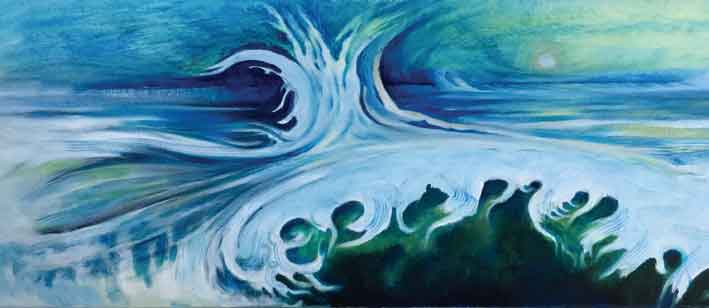
Her sketch-books reveal muted shades for her west of Scotland landscapes and vibrant colours for the Italian scenes. Unsurprisingly, the sea predominates: Circe's island painted in Anzio, the sun setting over calm waters (she has a fondness for the colours, orange and blue), surf, whirlpools and Anzio fishermen mending their nets but for my money, I like her painting of lifebuoy rings, reminding me of early 20th century Cornish artists, Christopher Wood and Alfred Wallis. Accompanying the image are the words, "We are all at sea, drifting, stopping and salvaging."
Margherita's work owes much to her interest in literature. After a university degree in English literature (2007), she was awarded a distinction (2012) for her Masters in Literature, Culture and Place; Zola, Conrad, R.L. Stevenson and Ian H. Finlay influence her most.
She used to depict the human form but today she concentrates on land and seascape. One of her most striking works, however, is 'Jane Eyre, the Threshold'. With her back to the viewer, the subject gazes into the distance, suggesting anticipation and fear.
After some challenging experiences in Royston, Margherita Muller has crossed the threshold and not only survived there, but thrived.


